How to Survive an Anthrax Exposure

How to Survive an Anthrax Exposure
When facing the threat of anthrax exposure, keeping a clear head is crucial.
Anthrax spores can be deadly if inhaled, ingested, or come into contact with open wounds.
Emerging evidence suggests that climate change may exacerbate the spread of anthrax, making preparedness even more vital.
Surviving anthrax exposure requires preparation and quick action to minimize risk and seek medical attention promptly.
What is Anthrax
Anthrax is a severe infectious disease caused by the bacterium Bacillus anthracis. It can affect both humans and animals.
In humans, anthrax can occur in three forms: cutaneous (skin), inhalation (lungs), and gastrointestinal (digestive system). The cutaneous form is the most common and least dangerous, while inhalation anthrax is the most severe and often fatal if not treated promptly. Anthrax spores can survive for long periods in the environment, making it a potential bioterrorism threat.
Did You Know?
Anthrax spores can survive for decades in soil, making it possible for animals or humans to be exposed to the bacteria long after the initial contamination event.
Understanding Anthrax Exposure
While relatively rare in most parts of the world, anthrax is notable for its potential to cause severe illness and even death in humans and animals.
The bacterium can exist in several forms, including spores, and is highly resistant to harsh environmental conditions such as heat, cold, and disinfectants. These spores can persist in the soil for years, posing a threat to individuals who come into contact with contaminated materials.
There are several routes of exposure to anthrax, each with its own set of symptoms and potential complications.
Inhalation anthrax occurs when spores are inhaled into the lungs, typically resulting in flu-like symptoms initially but progressing rapidly to severe respiratory distress and systemic infection. Gastrointestinal anthrax occurs when contaminated meat is consumed, leading to symptoms such as abdominal pain, nausea, vomiting, and bloody diarrhea. Cutaneous anthrax is the most common form and occurs when spores enter the body through breaks in the skin, causing characteristic ulcerated lesions.
Understanding the various modes of transmission and symptomatology of anthrax is crucial for effective prevention, diagnosis, and treatment of the disease.
Anthrax Transmission Routes
Have you ever wondered how anthrax bacteria find their way into our bodies? Let’s explore the fascinating ways in which anthrax spreads to humans. Understanding these transmission routes is essential for protecting ourselves and staying healthy.
Here are some key points to consider:
- Direct Contact: Anthrax can enter the body through cuts, scrapes, or abrasions if we come into contact with contaminated animals or animal products.
- Inhalation: Breathing in anthrax spores, usually from contaminated soil or animal hides, can lead to infection, especially in industrial settings.
- Ingestion: Consuming undercooked meat from infected animals or drinking contaminated water can also introduce anthrax into the body.
- Injection: Although rare, anthrax can be transmitted through contaminated needles or intentional exposure, such as bioterrorism.
Understanding these transmission routes and taking necessary precautions can reduce the risk of anthrax exposure and protect ourselves from infection.
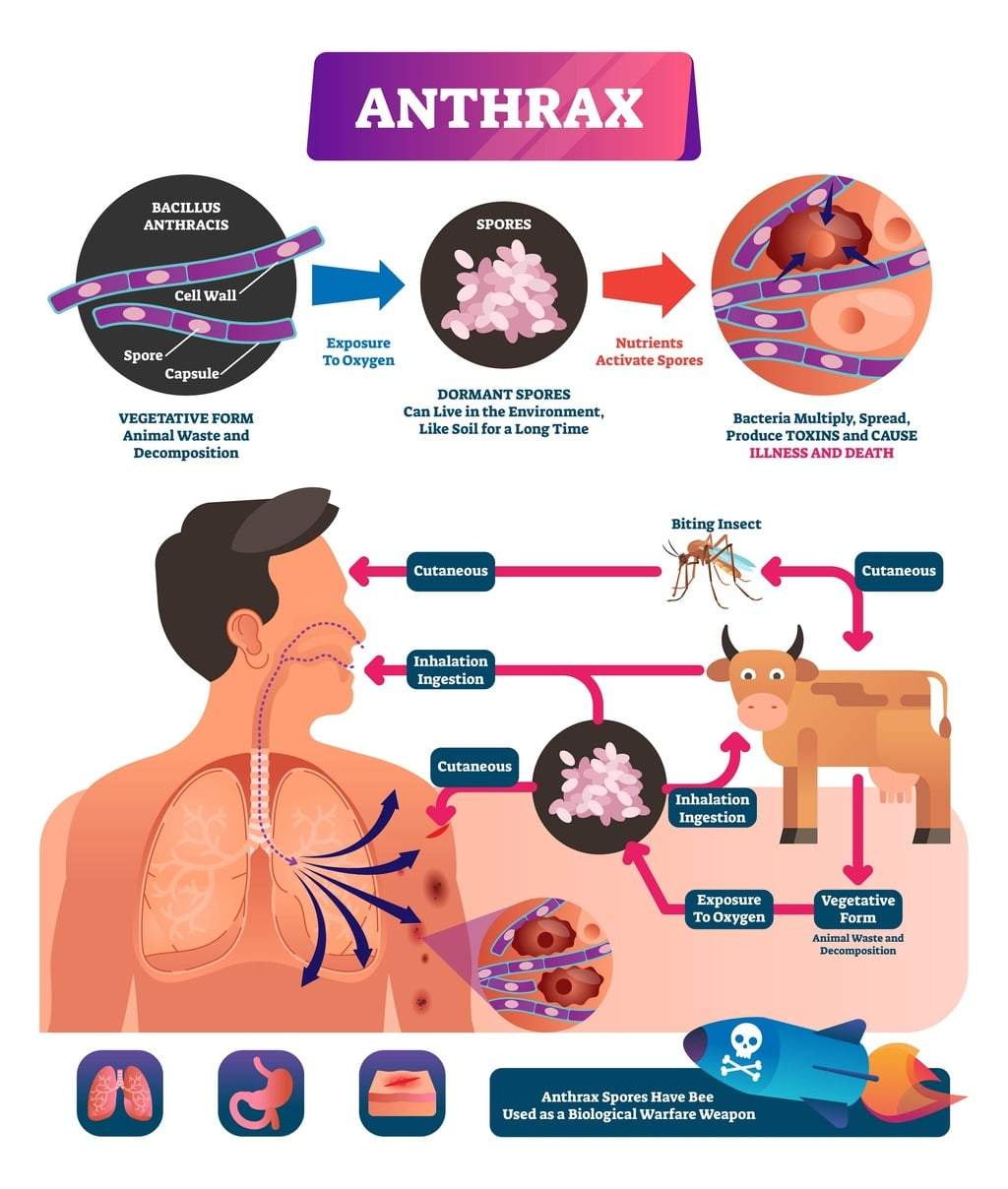
Anthrax Exposure Survival Tips and Strategies
Learn how to safeguard yourself against Anthrax exposure with these essential tips.
From understanding the risks to taking preventative measures, this guide offers valuable advice to keep you and your loved ones safe during an Anthrax threat.
Anthrax Preparedness Planning
A solid plan can make all the difference in how you and your community respond to anthrax exposure.
Here are some critical steps you can take to create a personal or community response plan:
- Stay informed: Keep updated with information from local health authorities and government agencies about anthrax risks and preparedness measures.
- Identify potential risks: Take some time to assess your personal or community risks for anthrax exposure. Consider factors such as proximity to potential sources of anthrax, like agricultural areas or industrial sites.
- Develop a communication plan: Establish clear communication channels and protocols for sharing information with family members, neighbors, and community leaders during an anthrax incident.
- Stock up on supplies: Ensure you have a well-stocked emergency kit with essentials like food, water, medications, and first aid supplies. Consider including items specifically for anthrax exposure, such as antibiotics and protective gear.
- Practice drills: Conduct regular drills and exercises to practice your response plan and familiarize yourself with emergency procedures. This will help ensure a smooth and coordinated response in the event of an actual anthrax exposure.
- Collaborate with others: Work with neighbors, community organizations, and local authorities to develop a coordinated response plan that addresses the needs of everyone in your community.
Creating a personal or community response plan can help ensure you’re prepared to effectively respond to an anthrax exposure and protect yourself and those around you.
Recognizing Symptoms of Anthrax Exposure: Early Signs and Symptoms
Recognizing these signs early on is crucial for seeking timely medical assistance and effectively managing the situation. Check out these bullet points for insights on identifying symptoms of Anthrax exposure:
- Fever: Watch for a sudden onset of high fever, a common early symptom of Anthrax exposure.
- Flu-like symptoms: Be mindful of symptoms resembling the flu, such as body aches, fatigue, and chills.
- Respiratory distress: Pay attention to any difficulty breathing or shortness of breath, as Anthrax exposure can affect the respiratory system.
- Skin lesions: Look out for unusual skin lesions, mainly black or dark-colored sores, which may indicate cutaneous Anthrax.
- Gastrointestinal issues: Be aware of symptoms such as nausea, vomiting, diarrhea, and abdominal pain, as gastrointestinal Anthrax can also occur.
Remember, early detection is critical to effective treatment, so stay informed and vigilant about recognizing the signs of Anthrax exposure.
Bioterrorism
anthrax spores were used in bioterrorism attacks in the United States in 2001? Letters containing anthrax spores were mailed to several media outlets and government offices, resulting in 22 anthrax infections and five deaths.
Immediate Response to Anthrax Exposure
Have you found yourself in a situation where anthrax exposure is a concern? Don’t panic! Knowing what immediate steps you can take to protect yourself and others is essential.
Here are some key points to keep in mind for first aid and emergency measures in case of anthrax exposure:
- Stay calm and assess the situation: Take a deep breath and remain calm. Assess the severity of the exposure and the potential risk to yourself and others.
- Remove contaminated clothing: If you suspect you’ve come into contact with anthrax, remove any clothing that may have been exposed to the bacteria. This can help prevent further contamination.
- Wash exposed skin with soap and water: Thoroughly wash any exposed skin with soap and water to remove any anthrax spores that may be present.
- Seek medical attention immediately: If you believe you’ve been exposed to anthrax, it’s crucial to seek medical attention right away. Contact emergency services or go to the nearest hospital for evaluation and treatment.
- Follow medical advice: Once you’ve sought medical attention, follow healthcare professionals’ advice and treatment recommendations. They will be able to assess your condition and provide appropriate care.
Medical Treatment for Anthrax
If you or someone you know has been exposed to anthrax, getting the proper medical care is crucial.
Here’s what you need to know about antibiotics and antitoxins in treating anthrax:
- Antibiotics: These are the mainstay of anthrax treatment. They work by killing the anthrax bacteria in the body and preventing the infection from spreading. Common antibiotics used for anthrax include ciprofloxacin, doxycycline, and penicillin.
- Antitoxins: In addition to antibiotics, antitoxins may be given to neutralize the toxins the anthrax bacteria produce. These antitoxins can help reduce the severity of symptoms and improve the chances of recovery.
- Hospitalization: Depending on the severity of the anthrax infection, hospitalization may be necessary. In the hospital, doctors can closely monitor the patient’s condition and administer intravenous antibiotics and antitoxins as needed.
- Follow-up care: After initial treatment, following up with your healthcare provider for further evaluation and monitoring is essential. This ensures that the anthrax infection has been fully treated and reduces the risk of recurrence.
If you suspect you’ve been exposed to anthrax, don’t hesitate to seek medical attention immediately.
Decontamination Procedures
If you’ve come into contact with anthrax, it’s crucial to properly clean and disinfect exposed areas to prevent further spread of the bacteria.
Here are some simple steps you can take to decontaminate:
- Remove contaminated clothing: The first step is to remove any clothing or personal items that may have come into contact with anthrax spores. Be sure to handle these items carefully to avoid spreading the bacteria further.
- Wash with soap and water: Thoroughly wash exposed skin with soap and water to remove any anthrax spores that may be present. Pay special attention to areas such as the hands, face, and other exposed areas.
- Disinfect surfaces: Use a household disinfectant or a solution of bleach and water to clean and disinfect surfaces that may have been contaminated with anthrax. Be sure to follow the manufacturer’s instructions for proper use and dilution.
- Ventilate the area: Open windows and doors to allow fresh air to circulate and help remove any lingering anthrax spores from the environment.
- Seek medical attention: If you believe you’ve been exposed to anthrax, it’s essential to seek medical attention right away. Your healthcare provider can assess your risk and guide any additional steps you may need to take.
Anthrax Vaccination: Prevention Strategies and Vaccine Availability
Anthrax vaccination is a crucial prevention strategy in combating the threat of anthrax exposure. The vaccine works by stimulating the body’s immune system to produce antibodies against the anthrax bacteria, providing immunity to the disease. While anthrax vaccination is primarily recommended for individuals at high risk of exposure, such as military personnel and laboratory workers, it can also be considered for those living in areas where anthrax is prevalent or during outbreaks.
One of the critical advantages of anthrax vaccination is its ability to provide long-lasting immunity with a relatively small number of doses. The vaccine typically consists of three initial doses administered over six months, followed by booster doses given at regular intervals to maintain immunity. Additionally, studies have shown that the anthrax vaccine is safe and effective, with minimal side effects reported.
Availability of the anthrax vaccine may vary depending on factors such as geographical location, government regulations, and public health policies. In some countries, the vaccine may be readily accessible to high-risk individuals through government-sponsored vaccination programs or healthcare providers. However, in other regions, access to the vaccine may be limited, and individuals may need to consult with healthcare professionals or public health authorities for guidance on vaccination options.
Overall, anthrax vaccination plays a crucial role in preventing the spread of anthrax and protecting individuals at risk of exposure. By ensuring timely vaccination and maintaining immunity through booster doses as recommended, individuals can significantly reduce their risk of contracting anthrax and contribute to overall public health efforts to combat this infectious disease.
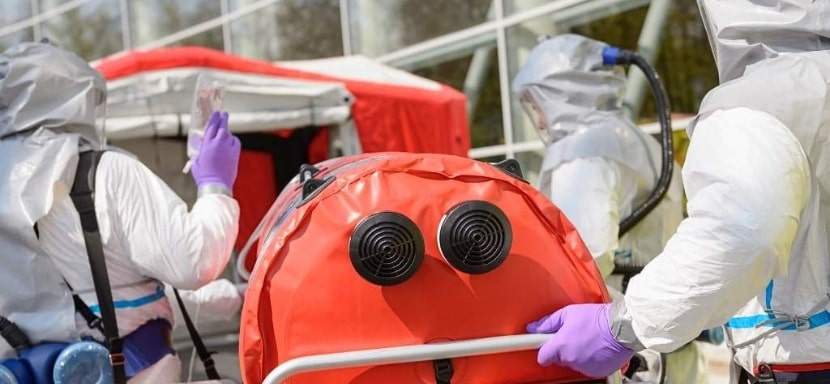
Psychological Effects of Anthrax Exposure
Dealing with the aftermath of anthrax exposure can be challenging, especially when fear and anxiety start to creep in. You’re not alone in this! One of the best things you can do is reach out to someone you trust—a friend, family member, or even a professional counselor. Talking about what you’re going through can help ease the burden and make you feel less alone.
It’s also important to educate yourself about anthrax exposure and treatment options, so you know what to expect. And hey, don’t forget to take care of yourself! Whether it’s practicing relaxation techniques, staying active, or just taking some time for yourself, self-care is critical to managing anxiety.
Remember, it’s okay to ask for help when you need it, and taking small steps each day can make a big difference in overcoming fear and anxiety.
Public Health Response to Anthrax Outbreaks
During an anthrax outbreak, the government steps in to handle the situation and keep people safe. They monitor the spread of the disease by tracking cases and investigating where it’s popping up.
Communication is vital, so they ensure everyone knows what’s happening, how to stay safe, and where to get help. To prevent more people from getting sick, they might give out vaccines and antibiotics to those who might have been exposed.
They also work on cleaning up any contaminated areas to stop the bacteria from spreading further. Sometimes, they might need to quarantine or isolate people to keep the disease from spreading.
They work closely with healthcare providers to make sure anyone who gets sick gets the proper treatment quickly. Overall, the government plans to tackle anthrax outbreaks head-on and keep everyone safe.
Top 10 Deadliest Anthrax Exposure Events in History
Learn about the deadliest outbreaks that have claimed lives and shaped public health responses.
- Sverdlovsk Anthrax Outbreak (1979): A release of anthrax spores from a military facility in Sverdlovsk, Soviet Union, led to at least 66 deaths.
- Gruinard Island Anthrax Incident (1942-1945): British military testing of anthrax on Gruinard Island resulted in the contamination of the island, rendering it uninhabitable for decades.
- Zaragoza Anthrax Outbreak (1997): Contaminated meat products in Zaragoza, Spain, caused five deaths and over 20 illnesses.
- Industrial Area Anthrax Outbreak (1974): A workplace contamination incident in the U.S. resulted in 2 deaths and several illnesses.
- Sichuan Anthrax Outbreak (2007): Contaminated animal hides led to an outbreak in Sichuan, China, resulting in 1 death and multiple infections.
- Kameshkovo Anthrax Outbreak (1971): An outbreak in Kameshkovo, Soviet Union, caused by contaminated meat products, resulted in 3 deaths.
- Kirov Anthrax Outbreak (1979): A release of anthrax spores in Kirov, Soviet Union, led to 3 deaths and numerous illnesses.
- Urals Anthrax Outbreak (1966): Contaminated meat products caused an outbreak in the Urals region of the Soviet Union, resulting in 2 deaths.
- Georgia Anthrax Outbreak (2007): A contaminated animal-hide processing facility in Georgia, USA, caused one death and multiple illnesses.
- Auckland Anthrax Outbreak (1998): An outbreak in Auckland, New Zealand, caused by contaminated heroin, resulted in 1 death and several infections.
More Crime & Terror Scenarios
How to Survive a Nightclub Shooting
Nightclubs pulse with life—lights flashing, music pounding, bodies packed tight on the dance floor. It’s a place to…
How to Survive Porch Pirates
If there’s one thing worse than a soggy box on your doorstep, it’s an empty spot where a package should…
How to Survive a Swatting Incident
Imagine the doorbell ringing, and instead of the pizza delivery guy, you see flashing lights, uniformed…
How to Survive a Human Trafficking Situation
Surviving a human trafficking situation takes courage, quick thinking, and sometimes a little luck. It’s not a…
How to Survive Being Stalked
Surviving a stalker is like trying to outrun a persistent mosquito in the middle of the night. No matter how…
Recent Survival Posts
How to Survive a Layoff
Layoffs feel personal—even when they’re not. One day, you’re responding to Slack messages and forwarding…
How to Survive a Drug Test
I never imagined I’d be so emotionally invested in a paper cup. But there I was, standing under the fluorescent…
How to Survive an Interrogation
If you’ve ever been caught in the crosshairs of an overly enthusiastic mall cop or stared down by someone…
How to Survive a Nightclub Shooting
Nightclubs pulse with life—lights flashing, music pounding, bodies packed tight on the dance floor. It’s a place to…
How to Survive a Bachelor Party
A bachelor party is a delicate mix of celebration, chaos, and questionable decision-making, wrapped…
More Crime & Terror Survival Scenarios

How to Survive Porch Pirates
If there's one thing worse than a soggy box on your doorstep, it's an empty spot where a package should be. Porch pirates—the modern-day scourge—are bold thieves who swipe packages left unattended. These petty criminals might seem like a minor nuisance compared to...

How to Survive a Swatting Incident
Imagine the doorbell ringing, and instead of the pizza delivery guy, you see flashing lights, uniformed officers, and weapons drawn. It's a scene nobody wants to star in, yet swatting incidents are becoming more common in today's digital age. A prank to some but a...
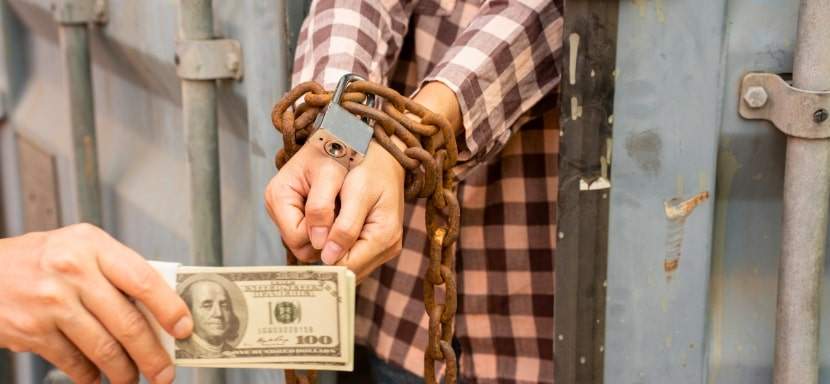
How to Survive a Human Trafficking Situation
It’s terrifying even to imagine being trapped in a human trafficking situation. These moments can feel hopeless, and it might seem like no one is coming to help. But the truth is, people have escaped and survived these situations. You can, too. Knowing what to do in...

How to Survive Being Stalked
Surviving a stalker is like trying to outrun a persistent mosquito in the middle of the night. No matter how hard you swat, it keeps coming back. But unlike mosquitoes, a stalker is a serious threat that can turn your life upside down. The good news is that you can...

How to Survive Being Drugged
In an increasingly unpredictable world, knowing how to protect yourself from being drugged is essential. This guide provides practical advice on recognizing the signs of being drugged, immediate steps to take, and long-term strategies for safety. With personal...
More Survival Scenarios

How to Survive a Layoff
When the Floor Falls Out: The Reality of a Layoff Layoffs feel personal—even when they're not. One day, you're responding to Slack messages and forwarding emails. Next, you're staring at your monitor as it logs you out... for good. Whether it's a restructuring, a...

How to Survive a Drug Test
The Cup, The Room, The Truth I never imagined I’d be so emotionally invested in a paper cup. But there I was, standing under the fluorescent hum of a strip-mall clinic, trying to recall the last time I ate a poppy seed bagel. That’s the thing about drug tests—they...

How to Survive an Interrogation
If you've ever been caught in the crosshairs of an overly enthusiastic mall cop or stared down by someone in a uniform with a clipboard and a glare, you’ve felt it — the chilly fingers of interrogation anxiety. And while most of us imagine interrogation scenes as...

How to Survive a Nightclub Shooting
Nightclubs pulse with life—lights flashing, music pounding, bodies packed tight on the dance floor. It’s a place to escape, feel the rhythm, and lose yourself in the crowd. But that same energy can turn deadly in seconds, transforming a night of fun into one of the...

How to Survive a Bachelor Party
A bachelor party is a delicate mix of celebration, chaos, and questionable decision-making, wrapped in the noble intention of sending the groom off into married life with a night he’ll (hopefully) remember. It’s a ritual as old as time—well, as old as men deciding...

How to Survive Your First Time at the Gym
Walking into a gym for the first time can feel like stepping into an alien world. The machines hum with purpose, the regulars move confidently, and you’re left standing there, clutching your water bottle, wondering whether you’re in the right place—or on the right...

How to Survive a Worldwide Communications Breakdown
Imagine waking up to silence. Your phone doesn’t buzz, your email won’t load, and even your local radio station crackles with static. A worldwide communications breakdown has hit. What next? For many, this doomsday scenario may sound like the opening lines of a...
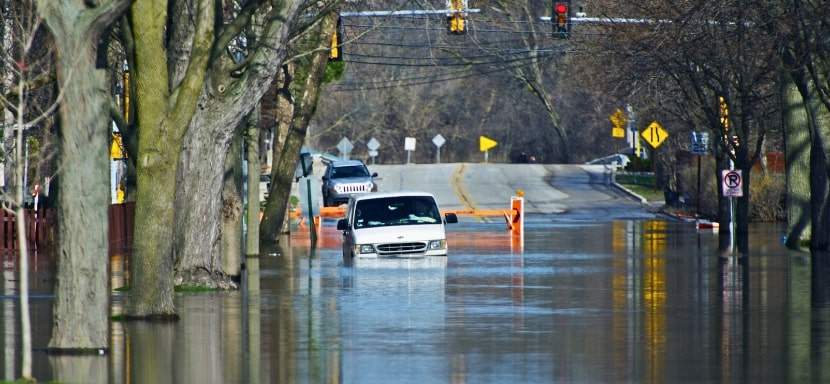
How to Survive a Flash Flood While Driving
Surviving a flash flood while driving requires quick thinking, calmness, and a solid plan to ensure your safety. Preparation can make all the difference between a close call and a catastrophe in emergencies like this. This guide provides practical advice to protect...

How to Build an Emergency Kit
Emergencies don’t knock politely at the door. They barge in, uninvited, like a distant relative with a penchant for drama, turning your world upside down without warning. Whether it’s a power outage, a natural disaster, or an unexpected evacuation, the key to staying...
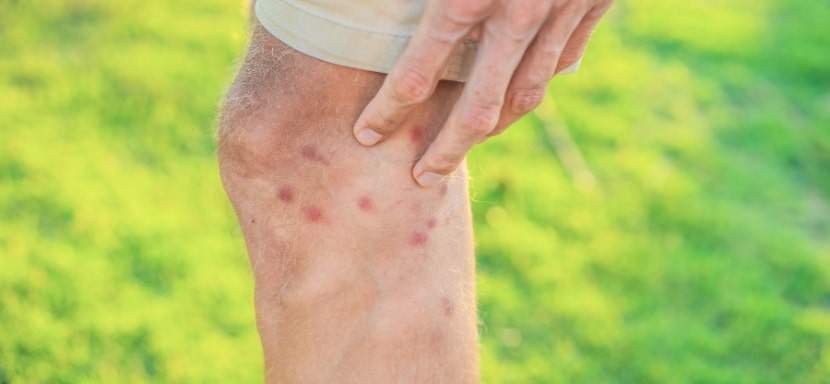
How to Protect Yourself From Insects in the Wild
There’s nothing like being out in the wild—birdsong echoing through the trees, the fresh scent of earth, and a deep sense of peace that makes you think, “Ah, this is what life is about.” But then comes the buzzing. Mosquitoes, ticks, and flies swoop in like uninvited...
